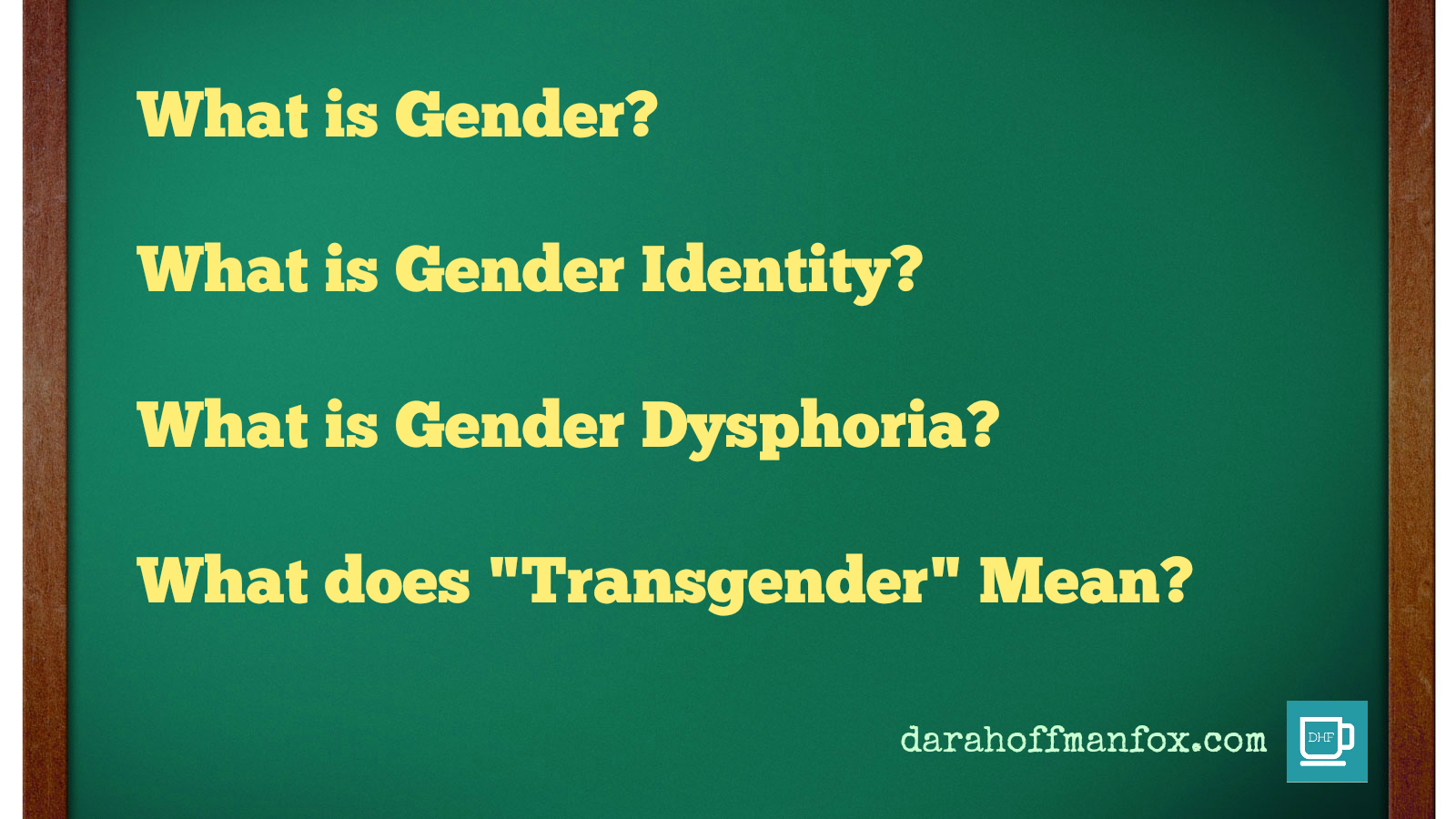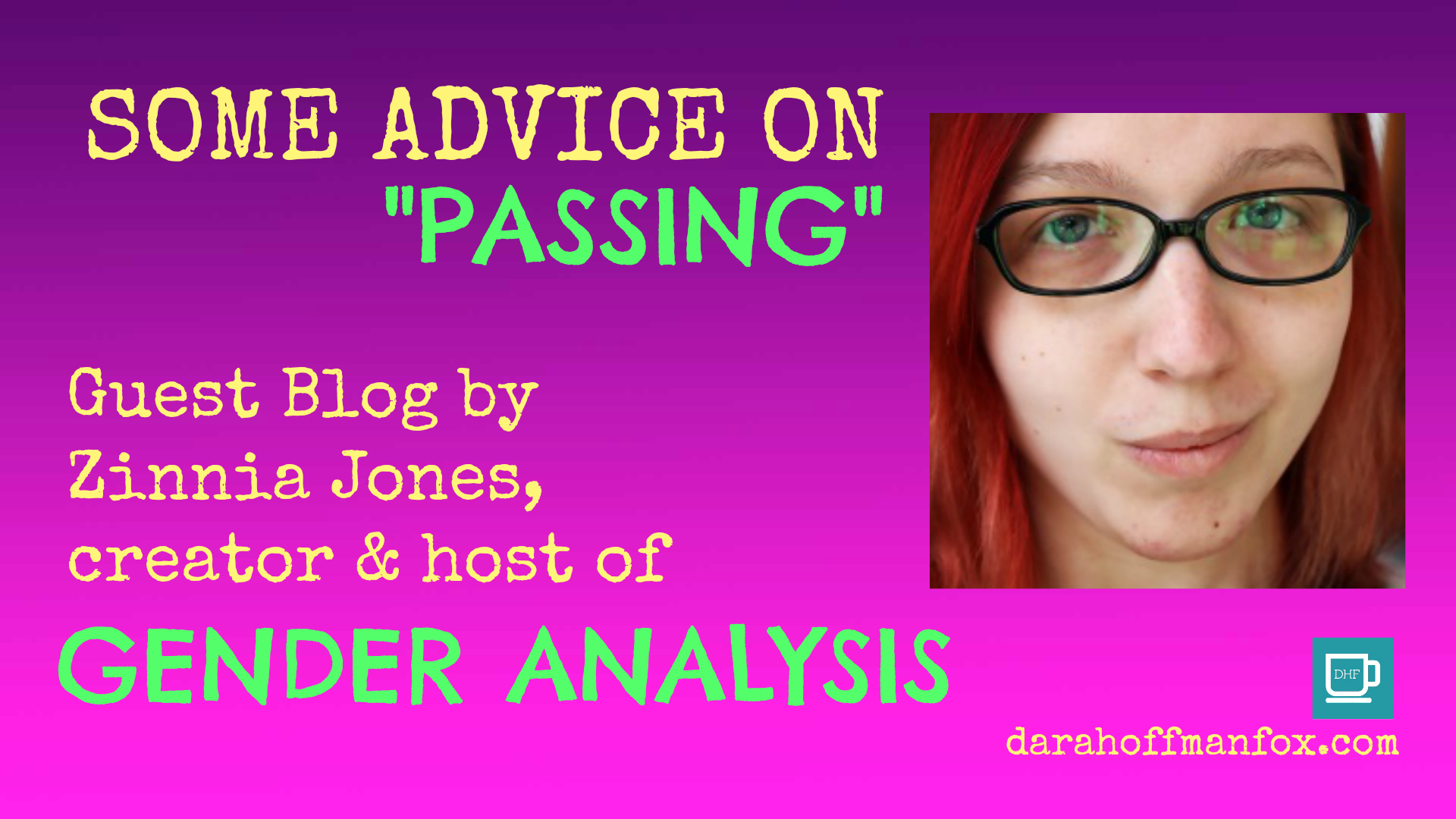Basic Transgender Terminology for Newbies
For many of you visiting this site it might be the first time you’re hearing certain words and terms related to the transgender world.
So, I’ve created this terminology post (with “a little help from my friends”) that I will frequently link back to. This way we can make an attempt at getting on the same page in our discussions.
The way I’ve designed this page is to gather together definitions that have already been created by transgender and trans voices (with a special guest appearance by a cisgender social activist). These folks are the ones who know first-hand what it’s like to be trans and transgender, so why use “my” definitions instead of theirs?
You’ll notice there will be a repeating of descriptions within different definitions, and maybe even what appears to be a contrast or two. I did this on purpose to show that, even within the transgender and trans* communities, there are differing opinions as to how to define these words. In the end it’s important to remember to respect how someone self-identifies and to use the descriptors with which they are most comfortable.
Please note: I’ve given credit next to each definition as to who it came from. Be sure to check out their links to learn more about them!
Keep in mind this list will continue to grow and change over time. In fact, feel free to send me your thoughts on what I might have missed, or that has changed since I originally posted this!
~~~~~~~~~~~~~
Transgender and Trans Terminology
~~~~~~~~~~~~~
TRANSGENDER (Courtesy of Matt Kailey, award-winning author and blogger) “There are many variations on this particular term. Here are several:
“1. Refers to a person whose gender identity and physical body (sex) are not in alignment or do not agree, either all or part of the time. This is a narrow definition that I prefer, but many people prefer a broader definition.
“2. Refers to a person who transgresses the gender norms of Western culture’s binary gender system (two-gender system), either all or part of the time and either intentionally or unintentionally. While everyone transgresses gender norms at some time or other, this definition generally encompasses those people who are viewed negatively or who are discriminated against because of their gender identity or gender presentation.
“3. Encompasses both definitions above and also includes transsexual people, or those who have made changes to their physical body to bring the body into alignment with the gender identity.”
TRANS* (Courtesy of Sam Killerman, social rights activist) “An umbrella term that refers to all of the identities within the gender identity spectrum…The asterisk makes special note in an effort to include all non-cisgender gender identities, including”:
TRANS – without the asterick (Matt Kailey) “Short for transgender, transsexual, or both. Because of variations in the definitions of transgender and transsexual, it is sometimes easier and more appropriate to use “trans” as a general term.”
CISGENDER (Courtesy of Julia Serano, writer, performer, activist). “‘Trans’ means ‘across’ or ‘on the opposite side of,’ whereas ‘cis’ means ‘on the same side of.’ So if someone who was assigned one sex at birth, but comes to identify and live as a member of the other sex, is called a ‘transsexual’ (because they have crossed from one sex to the other), then the someone who lives and identifies as the sex they were assigned at birth is called a ‘cissexual.'”
GENDER (Matt Kailey) “Refers to various aspects of a person and contains both biological and social components. While some people consider gender to be strictly a social construct, I maintain that there is a biological component, because if there were not, all people could be socialized into or “taught” the gender that matches the physical body. Gender involves gender identity, or how a person sees [themselves]; gender expression or presentation, which includes behaviors, mannerisms, appearance, clothing, and outward presentation; and gender expectations, which includes gender roles designated by a person’s culture.
TRANSSEXUAL (Julia Serano) “I chose to use it throughout Whipping Girl because it is currently the only word in the English language that refers to people (like myself) who physically transition to, and/or live and identify as, a member of the sex other than the one they were assigned at birth.
“Some people object to “transsexual” because they feel that it is pathologizing, because it was coined and is perpetuated by the medical/psychological/sexological establishment. Those who make this point often prefer activist terms like “transgender” or “transexual” (with one “s”). As I mention in the book, transgender is an umbrella word that includes many cissexuals (i.e., nontranssexuals), so it’s really not a useful synonym for transsexual.”
GENDER DYSPHORIA (Madeline H. Wyndzen, PhD.’s “All Mixed Up” website) “Having negative or conflicting feelings about one’s sex or gender role.”
In December 2012, “the American Psychiatric Association’s board of trustees approved changes to the latest version of The Diagnostic and Statistical Manual of Mental Disorders (DSM-V) that will remove the term “Gender Identity Disorder” (GID) which has historically been used by mental health professionals to diagnose transgender individuals. Simultaneously, the term “Gender Dysphoria” will be used to describe emotional distress over “a marked incongruence between one’s experienced/expressed gender and assigned gender.” (GLAAD)
HORMONE REPLACEMENT THERAPY – HRT (Madeline H. Wyndzen, PhD.) “A term used for the taking of sex-related hormone s (e.g., estrogen, testosterone). Most often the term is used for post-menapusal women taking estrogen. The term also applies to a transsexual taking hormones of the target sex.”
TRANSPHOBIA (Julia Serano) “Transphobia is an irrational fear of, aversion to, or discrimination against people who transgress gender norms. In much the same way that homophobic people are often driven by their own repressed homosexual tendencies, we believe that transphobia is first and foremost an expression of one’s own insecurity about having to live up to cultural gender ideals. The fact that transphobia is so rampant in our society reflects the reality that we place an extraordinary amount of pressure on individuals to conform to all of the expectations, restrictions, assumptions, and privileges associated with the sex they were born into.”
TRANSITION (Matt Kailey) “Refers to a process that includes changing or correcting the body or physical sex to match the gender identity through hormones and/or surgery, name change, legal paperwork changes, social adjustment, and other changes and adjustments necessary to live in the gender that matches the identity.”
TRANS WOMAN or TRANSWOMAN or MtF: (Matt Kailey) “Refers to a person who was born male (or assigned male at birth) and identifies as or has transitioned to female. Other terms include MTF (male-to-female), transsexual woman, transgender woman, and woman.”
TRANS MAN or TRANSMAN or FtM: (Matt Kailey) “Refers to a person who was born female (or assigned female at birth) and identifies as or has transitioned to male. Other terms include FTM (female-to-male), trans masculine or transmasculine person, transsexual man, transgender man, and man.”
GENDER EXPRESSION (Sam Killerman)”The external display of gender, through a combination of dress, demeanor, social behavior, and other factors, generally measured on a scale of masculinity and femininity.”
MISGENDER The act of gendering someone incorrectly. From “Being Misgendered Sucks“:
What does being misgendered feel like for a trans person? It feels embarrassing, humiliating, and annoying. It feels dangerously naked. Completely vulnerable. It makes you wonder how much you really pass… It felt like I’d made a fool out of myself, and I was absolutely embarrassed.
GENDER BINARY/GENDER NON-BINARY (from Genderqueer Identities) “The gender binary holds that the only genders possible are man and woman. Non-binary genders combine, exist between, or are outside of this binary. While there is nothing problematic as identifying as a man or a woman, the lack of allowance for gender identities other than men or women to exist is a problem within a binary system. A continuum of genders allows for there to be men, women, and everything in between, but no space for those outside of this continuum, or a space for none of the above. Even viewing men on one side and women on the other of such a continuum is problematic, as it implies that these genders are somehow ‘opposites’. Visualizing gender variation as a spectrum may be more helpful and accurate.”
Additional Reading: What Each of Facebook’s 51 New Gender Options Means






Pds314
January 14, 2016 at 8:32 PM“who are discriminated against because of their gender identity or gender presentation.”
This encompasses an unbelievably broad group. Gays, lesbians, metrosexuals, tomboys, men who wear pink or purple, men who wear kilts, men who don’t feel comfortable wearing kilts, women who don’t wear skirts or dresses, anyone who uses the YouTube comments section, anyone who stops using the YouTube comments section, tall women, short men, men who aren’t constantly at the gym, men who are constantly at the gym, anyone overcompensating, men with handbags, women who don’t have handbags, people with “fragile masculinity/femininity,” and pretty much anyone else. Yay. Cis doesn’t exist!